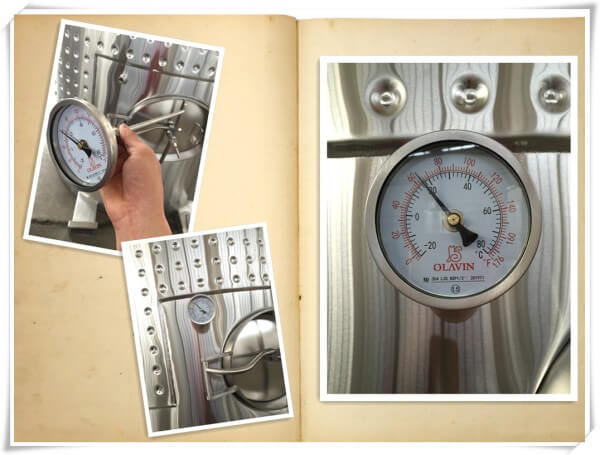What’s the best temperature for wine fermentation?
Fermentation temperature is critical in the production of great wine. Why is it so important? How do we control the fermentation temperature?
Alcoholic fermentation is a very important part of making wine, which converts the sugar in the grapes into alcohol and calories. In this process, controlling the fermentation temperature is a necessary condition for brewing good wine.
1. What are the effects of fermentation temperature?
Temperature control is important in the wine fermentation process because if the temperature inside the fermenter is too high (above 35 ℃or 95 ℉), the yeast will not survive. In an environment where the temperature is lower than 5 ℃(41℉), the yeast will enter a dormant state, and alcohol fermentation cannot be performed.
At the same time, heat is also a catalyst that accelerates the process of chemical reactions and biodegradation. This principle also applies to the process of wine alcohol fermentation. The higher the fermentation temperature, the faster the yeast will convert sugar into alcohol and carbon dioxide. In general, low-temperature fermentation requires more time to complete the entire fermentation process.
In addition, lower fermentation temperatures reduce the loss of volatile aromas and preserve the unique fruit and terroir personality of the wine. At the same time, lower temperatures are also beneficial for white wines to produce fruit-flavored esters. Higher fermentation temperatures can deplete volatile aromatics in wine, but it also helps to produce more pleasant aromatic substances, and this is also a necessary condition for red wines to extract color and tannins. But if the fermentation temperature is too high, the wine tastes like it was cooked.
2. What is the ideal fermentation temperature?
For red wine, wine fermentation temperature is generally in 20 ℃ to 32 ℃(68 ℉ to 89.6 ℉), high temperature is good for color and tannin extract, but when the temperature reaches 35 ℃ to 38 ℃(95 ℉ to 100.4 ℉), the fermentation will be aborted.
The fermentation temperature of white wine is generally lower than that of red wine, mostly between 12 ℃(53.6 ℉) and 22 ℃(71.6 ℉). Lower fermentation temperatures slow the fermentation of the wine and help preserve the fruity and individual character of the grapes themselves. For many aroma white wines that are fermented at lower temperatures, the entire fermentation process may last for several months.
Of course, depending on the grape variety and the different characteristics of each region, the winemaker can also choose the appropriate fermentation temperature according to the situation, in order to produce a specific style of wine.

3. How to measure the temperature of wine fermentation?
The temperature of the fermenter needs to be constantly monitored to ensure that the fermentation is carried out at the correct temperature. The easiest way to monitor the fermentation temperature is to use a sterilized kitchen thermometer: turn the fermenter on, then place the thermometer in to measure the temperature. This method requires control of the measurement time to prevent excessive wine contact with oxygen.
The fermentation temperature can also be monitored by affixing the bonding temperature strip to one side of the fermenter or another fermentation vessel. Although it is not accurate to every degree Celsius, it can tell the winemaker about the approximate temperature range in the fermenter. In addition, the probe thermometer and thermocouple (thermowell) can detect the fermentation temperature more accurately than the first two methods, but they are also more expensive.

4. How to control the fermentation temperature?
In order to produce a good wine that meets expectations, the winemakers have come up with many ways to control the fermentation temperature. Among the many temperature control methods, the refrigeration system is the most accurate and convenient. This system is generally a jacketed container with a thermostat, heating device, piping, etc., which allows a chilled liquid such as ethylene glycol (Ethylene Glycol) to flow through the pipe to control the temperature inside the container. This system works well in both grape fermentation and vintage aging.

Another common method of controlling the fermentation temperature is to control the temperature of the surrounding environment: place the fermenter in a cool wine cellar or install an air conditioning device in the fermentation chamber. Although this method is not so efficient, it can also control the temperature in the fermenter to some extent. For wines fermented in oak barrels, this method is the only option for temperature control.
